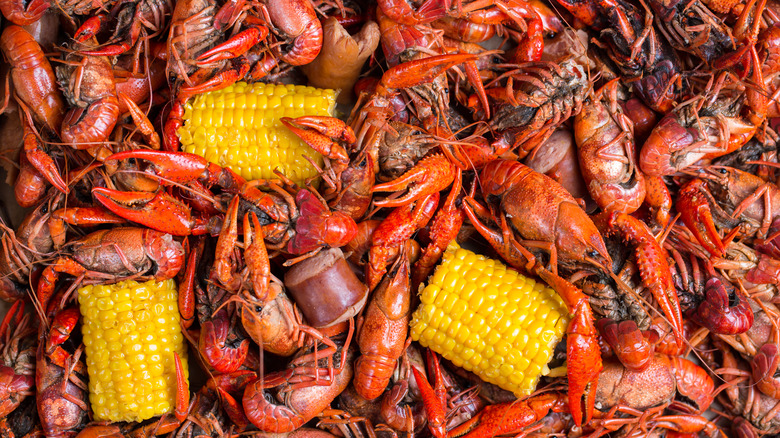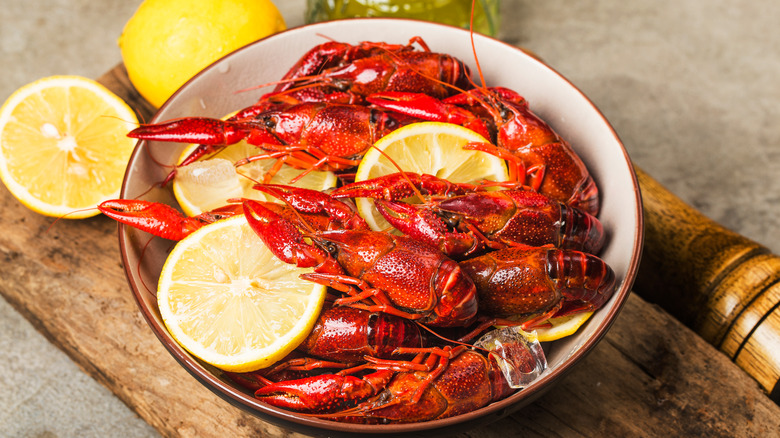The Absolute Best Way To Thaw Frozen Crawfish Without Ruining It
Crawfish are hearty crustaceans that roam in muddy terrain like creeks, rivers, and swamps. Yet this preferred environment belies the delicate, sweet flavor that comes from their tail meat. Comparatively speaking, crawfish — aka crayfish, crawdads, or mudbugs — bring to mind a cross between shrimp and lobster. And if you've ever cooked with those tasty shellfish, you likely know just how deft a hand is needed with this tender meat. One errant distraction can mean the difference between perfectly prepared and terribly tough crawfish. That extends to thawing out the tails as well.
As most of us don't procure fresh crawfish to crack and peel at a backyard boil, they generally come to us frozen, either whole or as tails. Thus, care is needed when defrosting seafood in order to bring them up to a proper cooking temperature, both to ensure tasty and properly textured meat and to keep the crawfish safe to eat. The best and safest method requires some planning. The night before your intended feast, move the crawfish from the freezer to the refrigerator. This affords plenty of thawing time while keeping things properly chilled. While it might seem tempting to dunk the crawfish in warm or hot water, this can negatively affect the texture of the fish and even promote the growth of harmful bacteria. A cold water bath can be used, if time is of the essence, but the refrigerator method is always the best bet.
How long will thawed crawfish last?
Frozen crawfish will keep for roughly a year if not thawed, but once they are free of the freeze, it's time to get started cooking. As with other seafood and shellfish, crawfish is best used right away, so only thaw the amount you plan on cooking and do so the night before you plan to prepare them. That said, life happens and plans change, so don't think the crawfish tails are done for if you can't get them prepared straight away. Store them in a plastic bag or airtight container in the refrigerator where they should be good for about two weeks.
No one wants to eat funky fish, so if you have any concerns about the quality of your crawfish, give it a few tests. The way to tell if your crustaceans have gone bad is to first give the tails a light pinch. The meat should be yielding, but with enough texture to bounce back. If the meat is grainy, mushy, or crumbling, that can be a sign of bad crawfish. Next, take a whiff; if you get anything other than a shellfish aroma, don't proceed. Rotten crawfish have a pronounced stink that is impossible to miss, thankfully. If you have any concerns, do not eat the crawfish. It'll be a shame to waste it, for sure, but not worth the risk of getting sick.

